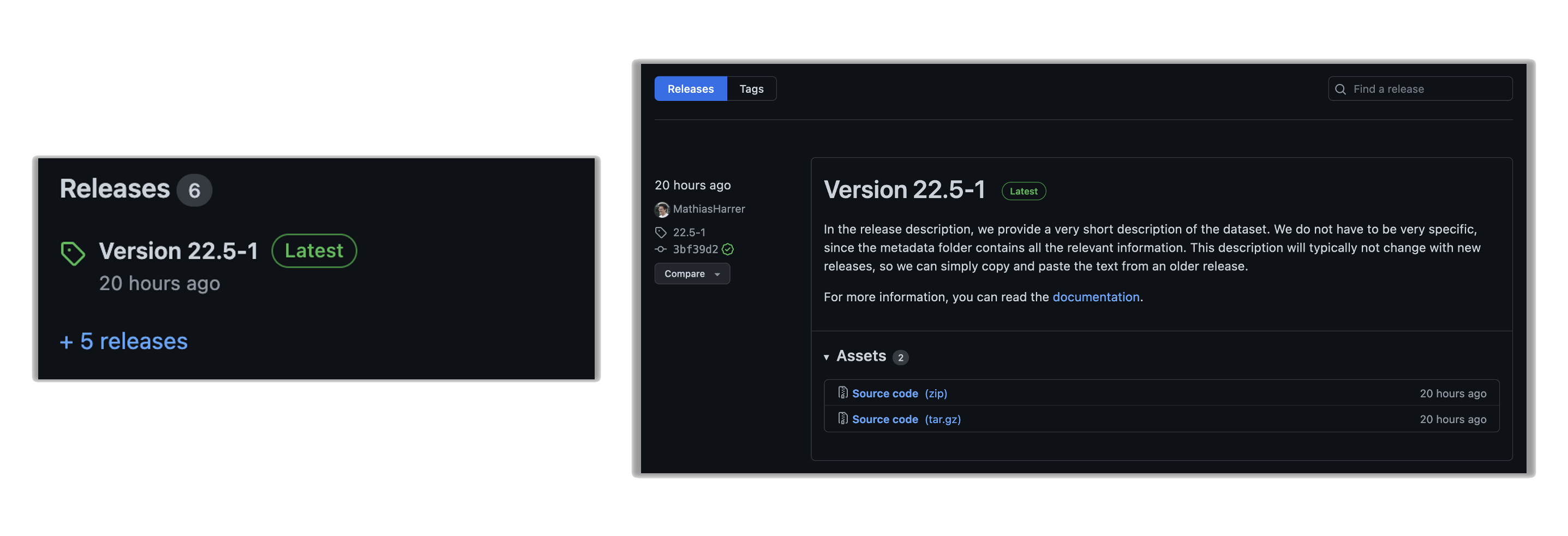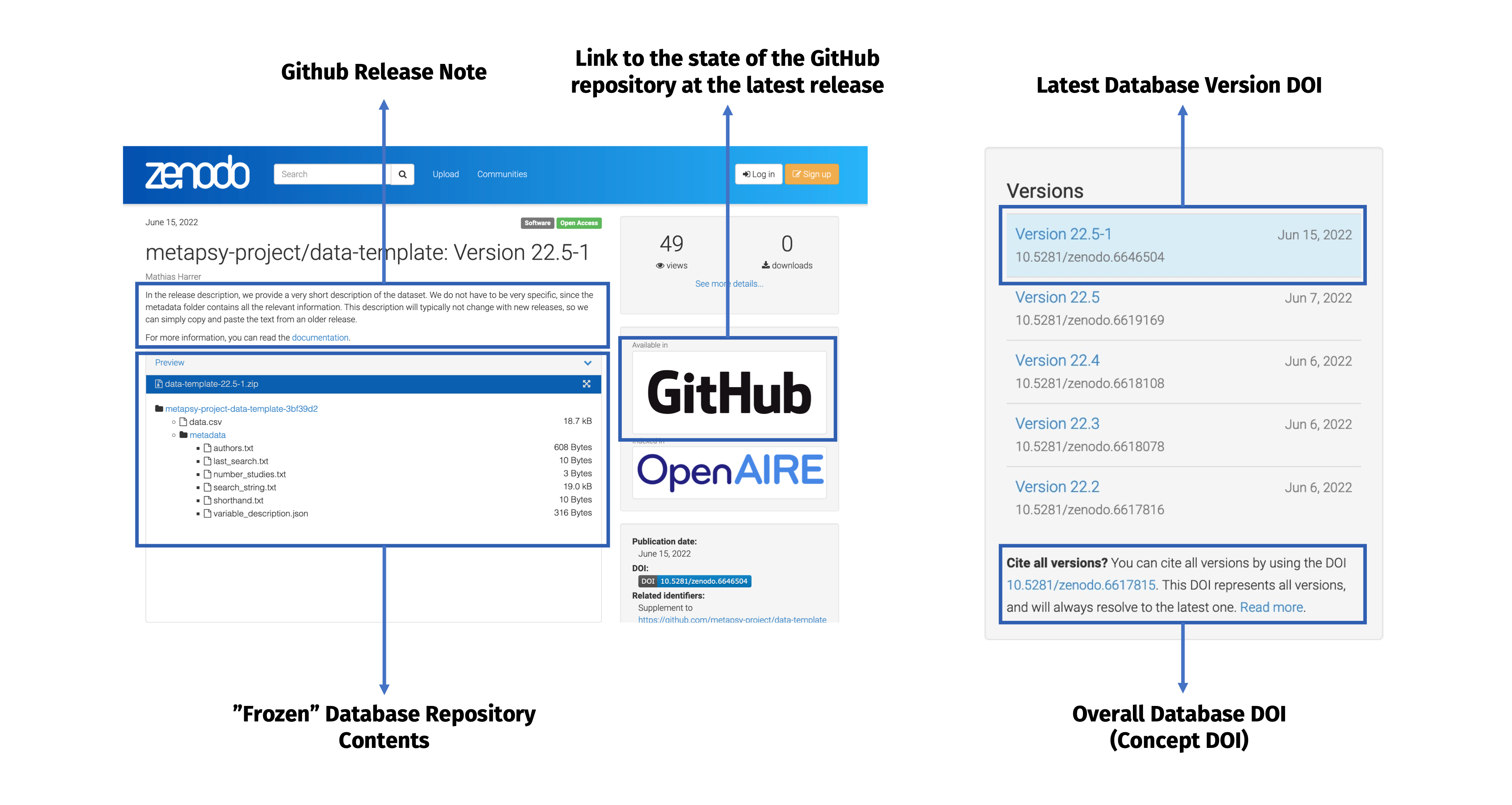Data Release
Once uploaded to a Github repository, databases are officially released from the master/main branch.

Versioning Convention
Annotated releases are published directly via Github. During this process, an ascending version number is created for the release. The version numbering convention used in Metapsy is similar (but not identical) to the Semantic Versioning 2.0.0 standard:
MAJOR.MINOR.PATCH
- The
MAJORnumber is used for actual updates of databases (i.e. new searches that lead to new studies being added to the database). Since most databases are updated yearly, this number refers to the last two digits of the year in which the search was conducted (e.g.22if the search was conducted in 2022). If multiple searches were conducted in one year, theMINORnumber is used to differentiate the versions. - The
MINORnumber is used for all changes that affect the data (or metadata) of a database; especially changes that were made while the last study search stays the same. For example, this can be additions to the metadata of a database, or changes and corrections in the extracted meta-analytic data. This part of the version number always starts with0, and then goes up from there. - The
PATCHnumber is for minor bug fixes or corrections; for example typo corrections in release notes. Patch number changes mean that the database is still “backward-compatible”, meaning that values obtained by analyzing this database will still the identical. This part of the version number also always starts with0.
Therefore, if a database was updated (via a new search) in 2023, the first release version number would be 23.0.0. If many additions were made some time after than, the new version number changes to 23.1.0. If typos are fixed in this version, the new version number is 23.1.1, and so forth.
Zenodo Integration
Using a Github integration, all releases are automatically indexed in Zenodo. Zenodo automatically issues a Digital Object Identifier (DOI) for the latest release. For each database, there are two types of DOIs:
- Database DOI. The Zenodo system refers to this as the “concept identifier”. It is an overall DOI for all versions of the database that will always resolve to the latest version.
- Version DOI. This is a version-specific DOI that allows referencing specific states of the database in the past.

Once indexed in Zenodo, the released database and its metadata is automatically propagated to other components of the Metapsy infrastructure, including the database documentation entry, metapsyData, and the Metapsy API. This means that the new database version is publicly available to the entire research community. Preferred citations included in each database documentation entry are also automatically updated to reflect the year and version of the new release. This process is partially handled via the Zenodo REST API.